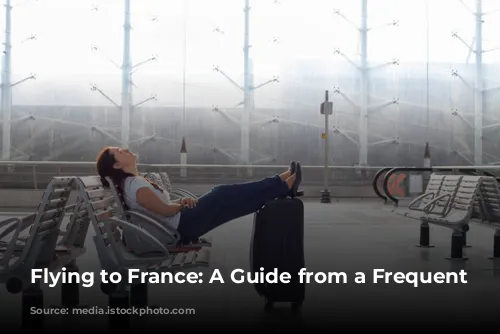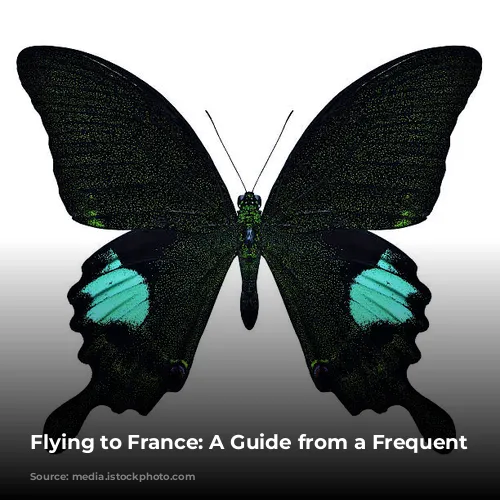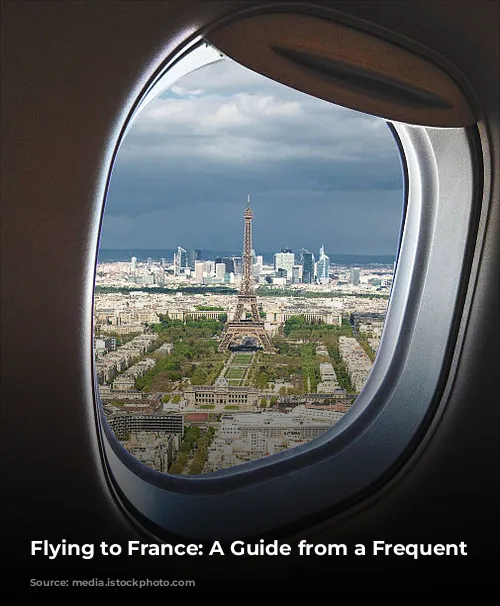It’s no secret that I love connecting with you, my amazing readers, and answering your questions! Just like in my day job and coaching, I prefer sharing information that truly interests you instead of guessing what you might want to read. That’s why I was thrilled to write this post, dedicated entirely to answering questions from a reader named Vaughan.

Navigating the Journey to France: Answering Vaughan’s Questions
Vaughan recently had to cancel his trip to France, but his curiosity about flying there hasn’t faded. He was particularly eager to learn about making long-haul flights comfortable, wondering if first-class travel is essential to avoid discomfort. He also wanted to know our preferred French airports. So, let’s dive into his questions and share our experience.

Comfort in the Clouds: Choosing the Right Flight Class
As many of you know, Australia is a long way from pretty much everywhere. A quick flight to Europe, with just one stop, takes almost 24 hours. Sadly, this means flying to France can get quite expensive. When it comes to comfort, I recommend choosing the best flight class that fits your budget.
While we’ve only indulged in Business Class, with its luxurious space, flat beds, and top-notch dining, on a few flights over the years, we’ve never flown First Class. (For context, return Business Class tickets for two from Melbourne, Australia, currently cost about $16,000 AUD, which is around $11,000 USD.)

Economy Class Hacks for a Comfortable Long-Haul Flight
This means we’ve become quite skilled at traveling in Economy (or, at best, Premium Economy) over the past 15 years. I’ve shared some of my must-have items for long-haul flights to France in a previous post, and those still apply. But here are some additional tips to make your journey even more comfortable:
- Stand up and stretch frequently. Movement is vital, especially around the 12-hour mark when you might feel like you’ll never stand upright again.
- Splurge on extra legroom. It helps minimize claustrophobia and allows for easier movement. We’ve also paid extra for seats where it’s just the two of us in a row, making it easier to get up without disturbing anyone.
- Pack a flat cushion. A cushion designed for sporting events has been a lifesaver for my lower back.
- Stay hydrated. The more dehydrated I am, the more aches and pains I experience on flights.
- Walk around during layover. Even if you’re exhausted, getting up and moving during a layover is essential.

Flying to France: Our Favorite Airports
I remember our first time flying into Charles de Gaulle airport in Paris. It was our first international trip, and we were still reeling from the 24-hour flight. I was worried we wouldn’t even make it out of the airport! While we did, even years later, I find CDG a bit intimidating. However, it’s very convenient for flying into France, especially if you’re heading to Paris.
We’ve actually flown into Frankfurt, Germany, many times and then taken a train to Paris. Frankfurt airport is incredibly easy to navigate, and the airport railway station has regular connections to France. It’s a great option if you’re traveling to eastern France, particularly Strasbourg.
For flights to southern France, Nice is an excellent choice. Another easy-to-navigate airport, with quick and convenient connections to the city and its beautiful surrounding villages.

Your Turn: Share Your France Flight Experience
Now it’s your turn, fellow travelers! How do you make long-haul flights to France more comfortable? Do you have a favorite city to fly into? I’d love to hear your tips and experiences in the comments below.
A big thank you to Vaughan for inspiring today’s post. Until next time, au revoir!









